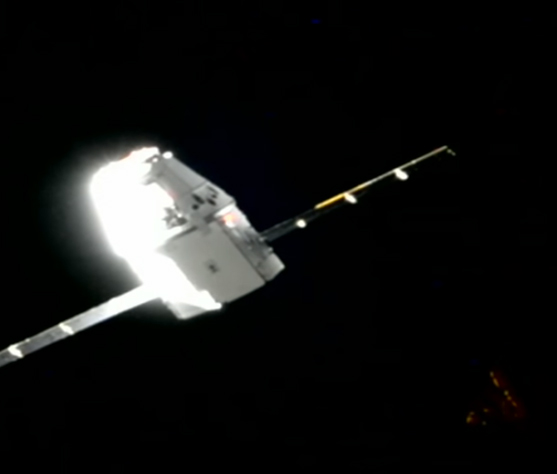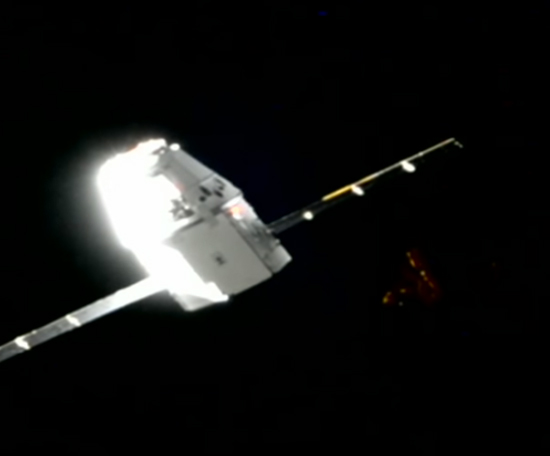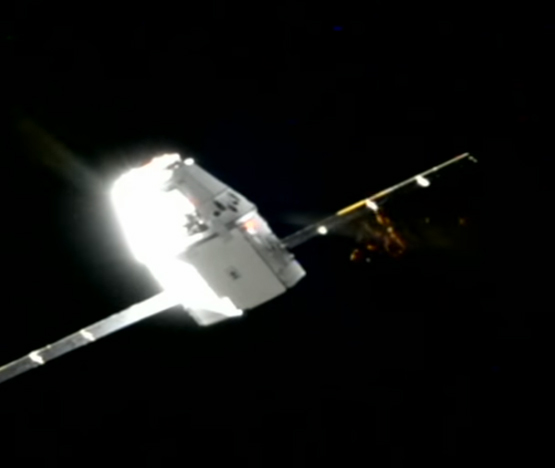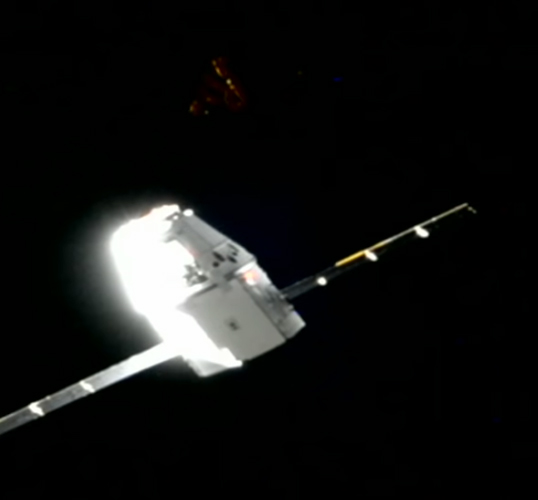It looks like you're using an Ad Blocker.
Please white-list or disable AboveTopSecret.com in your ad-blocking tool.
Thank you.
Some features of ATS will be disabled while you continue to use an ad-blocker.
share:
originally posted by: Spacespider
originally posted by: MrRCflying
a reply to: Phage
Phage, although I don't agree with you on political things, I do appreciate your level headedness and intelligent answers on other topics. So many times have I seen you give correct, proven, rational answers, only to be shot down. Thank you for your input sir.
You guys need a room ?
Nothing wrong with admiring another mans ummm... intelligence, yes, that is it, intelligence.
I was just speaking to my brother about a UFO we saw when we were kids, can't really pin down the year but it was in the early to mid 1970s. Thousands
of people saw it from south America to Alaska so news media had to repond saying it was a meteor that entered the atmosphere somewhere over Peru and
exited over northern Alaska. Apparently having the ability to follow the curvature of the earth???
It was massive, as it cut diagonally across the mountain valley in northern Idaho it's apparent size would have covered at least a couple dozen commercial airliners flying at Cruise altitude, if it was that high it must have been travelling many times the speed of sound leaving a light vapor trail ( it was in view for less than two seconds) and made only a slight hissing crackling sound.
I can still see it in my mind like it was yesterday, triangular shaped moving point first, a wedge of bright light in the bright mid-day sun flashing even brighter at the leading point as though the point we're glowing hot from the speed.
It was massive, as it cut diagonally across the mountain valley in northern Idaho it's apparent size would have covered at least a couple dozen commercial airliners flying at Cruise altitude, if it was that high it must have been travelling many times the speed of sound leaving a light vapor trail ( it was in view for less than two seconds) and made only a slight hissing crackling sound.
I can still see it in my mind like it was yesterday, triangular shaped moving point first, a wedge of bright light in the bright mid-day sun flashing even brighter at the leading point as though the point we're glowing hot from the speed.
CCD cameras in space get hit with cosmic rays all the time, they get hit enough that it eventually causes hot pixels in the pixel array. What you are
seeing are those hot pixels, not stars, and the 'spacecraft' are ground city lights on the Earth below.
a reply to: peacefulpete
It's unlikely for stars to show on video due to exposure settings plain & simple.
Here is an example timelapse from the ISS made from still photographs with wide aperture very high iso and quick shutter speed or lower iso wide aperture & longer shutter speed
Here a still image from ISS with exif data
Aurora from ISS
Exposure details Nikon D4 24mm lens f1.4 (very wide aperture to let in more light) iso 8000 (very high setting) and 3 seconds shutter time.
The video shown in the OP wont show stars.
It's unlikely for stars to show on video due to exposure settings plain & simple.
Here is an example timelapse from the ISS made from still photographs with wide aperture very high iso and quick shutter speed or lower iso wide aperture & longer shutter speed
Here a still image from ISS with exif data
Aurora from ISS
Exposure details Nikon D4 24mm lens f1.4 (very wide aperture to let in more light) iso 8000 (very high setting) and 3 seconds shutter time.
The video shown in the OP wont show stars.
a reply to: NoCorruptionAllowed
emf is what I thought first too, remembering this article about people hearing sounds from meteors despite the noise traveling faster than the speed of sound, it was thought to be an emf people perceived
www.livescience.com...
who knows tho
emf is what I thought first too, remembering this article about people hearing sounds from meteors despite the noise traveling faster than the speed of sound, it was thought to be an emf people perceived
www.livescience.com...
who knows tho
originally posted by: Phage
a reply to: peacefulpete
No. The camera is not floating in space. It is orbiting the planet at 17,000 mph, attached in a fixed position to the ISS.
The cameras are floating in space, obviously, and there'd be a lot of factors for whether the stars appear to move, or not.
Yes, I know. We're both talking about cameras attached to the ISS. It's just semantics, to say that the ISS isn't "floating in space," as it orbits the planet. But yeah, I suppose my phrasing wasn't so clear.
originally posted by: MrRCflying
a reply to: peacefulpete
Hmmm... I thought there was intelligent life on earth. Sadly, I may be wrong.
I imagine you looking in the mirror sadly, as you say that, lol.
originally posted by: wmd_2008
a reply to: peacefulpete
It's unlikely for stars to show on video due to exposure settings plain & simple.
Here is an example timelapse from the ISS made from still photographs with wide aperture very high iso and quick shutter speed or lower iso wide aperture & longer shutter speed
Here a still image from ISS with exif data
Aurora from ISS
Exposure details Nikon D4 24mm lens f1.4 (very wide aperture to let in more light) iso 8000 (very high setting) and 3 seconds shutter time.
The video shown in the OP wont show stars.
OK I seem to not be understanding your post. I thought ur point was that stars won't show in the recent live video from SpaceX, right?
It's mainly disproven by just watching the video from SpaceX, which seems to obviously show the stars, but beyond that:
You embedded a vid... with stars. And a photo... with stars.
What is that supposed to prove, other than the ability to capture the stars, in photos and videos?
If people think its lights on earth, then how do they reflect light back when the thruster is used. At that distance it could not happen.
two different vids?
edit on 21-12-2018 by Lysergic because: (no reason given)
a reply to: Lysergic
They're just different sightings, within the same vid.
SpaceX original vid: www.youtube.com...
The one u just posted frames of, is actually the most detailed sighting, visually. If u look at SpaceX original vid, your ufo appears at about 1:35 (one minute, 35 seconds).
The UFO that the thread is mostly about, happens at about 4 min. and 19 seconds. I focused on that one because the audio aspect is so mysterious and interesting.
By the way, even if the wooshing sound comes from some kind of magnetic field disturbance, or something like that, it's STILL unexpected that it would create SOUND for a live broadcast. (Like, why would the cameras be outputting audio anyway, in any form, for a live broadcast? I still think that aspect is crazy lol.)
They're just different sightings, within the same vid.
SpaceX original vid: www.youtube.com...
The one u just posted frames of, is actually the most detailed sighting, visually. If u look at SpaceX original vid, your ufo appears at about 1:35 (one minute, 35 seconds).
The UFO that the thread is mostly about, happens at about 4 min. and 19 seconds. I focused on that one because the audio aspect is so mysterious and interesting.
By the way, even if the wooshing sound comes from some kind of magnetic field disturbance, or something like that, it's STILL unexpected that it would create SOUND for a live broadcast. (Like, why would the cameras be outputting audio anyway, in any form, for a live broadcast? I still think that aspect is crazy lol.)
originally posted by: JimOberg
a reply to: Zeropinion
This?
www.youtube.com...
I'M running a very slow connection, can't stream video at the moment but the heading looks right. Literally the moment I posted my brother sent me a link to the great daytime fireball of 72 Which seems to be it though the description says it was round (it was not) I was looking right at it and remember very clearly the image I described above. The idea that a 4000 ton object bounced off the atmosphere seems a bit incongruous but hey, I'm no astrophysicist.
Still, a south to North trajectory for such an object seems pretty unusual.
I also remember them saying south America to alska, maybe the Yukon, not Utah to Alberta as the article claiimed.
originally posted by: Zeropinion
originally posted by: JimOberg
a reply to: Zeropinion
This?
www.youtube.com...
I'M running a very slow connection, can't stream video at the moment but the heading looks right. Literally the moment I posted my brother sent me a link to the great daytime fireball of 72 Which seems to be it though the description says it was round (it was not) I was looking right at it and remember very clearly the image I described above. The idea that a 4000 ton object bounced off the atmosphere seems a bit incongruous but hey, I'm no astrophysicist.
Still, a south to North trajectory for such an object seems pretty unusual.
I also remember them saying south America to alska, maybe the Yukon, not Utah to Alberta as the article claiimed.
Thanks for sharing the awesome experience. Of course it didn't 'bounce' off the atmosphere, that was some idiot reporter thinking he could dumb it down enough for his readers to understand. The object was a 'grazer' [as in just missing, not eating grass], that lost energy as it briefly passed through the atmosphere but had enough initial momentum that it kept going. We'll never see it again, when it comes around again to our orbit we'll be somewhere else along the path.
And fireballs that bright often do create sounds down on the surface where people can hear them, but not by acoustical means. Here's another example:
original link is here [if broken load it into the wayback machine -- the redirect link doesn't seem to be readable by ATF reposting formats].
www.astronomy.com...
edit on 21-12-2018 by JimOberg because: link format funnies
Whatever it is, (from a video posted later which shines a light on it), it seems to be passing very close based on how the light from the capsule
shines on it. You can conclude from that, that it is not very big. Perhaps something that is part of the mission that wasn't mentioned?
originally posted by: peacefulpete
originally posted by: Jay-morris
Could it be the earth below, and we are seeing city lights? Apart from that, I have no other explanations.
That seems to be the most popular mundane explanation for it.
However, I believe that we're seeing stars in the background the whole time (not the Earth).
Plus, the UFO really seems to make its own blasting sound, as it passes by the camera! Which would be a hell of a coincidence if the sound was unrelated to the sighting at that one specific moment lol.
It is also the correct explanation.
The initial elliptical orbit of the capsule is 204 by 357 Kilometers. The capsule fires its own thruster reaching an orbit of 352 by 359 Kilometers. Two additional firings bring it closer to the Space Station’s 403 by 406-Kilometer orbit.
Rendezvous is started with the capsule 2.5 km below the station. Another burn reduces the vertical distance to 1.4 km. Approach is initiated by moving the capsule 350 m directly below the station. From there the capsule climbs vertically towards the station reaching the capture point.
So the camera is looking down onto capsule and earth below.
The camera signal does not include any audio. So it is certainly not coming from them.
new topics
-
Sen. Johnson Asks the CDC How Many Americans Were Killed by COVID Shots
Science & Technology: 26 minutes ago -
I just looked around and he's gone
Music: 3 hours ago -
1 and 2 Kings
Religion, Faith, And Theology: 6 hours ago -
Gender identity
Rant: 7 hours ago -
Suspect in attempted assassination of Trump traveled to Ukraine in Apr 22 called for bombing Moscow
US Political Madness: 7 hours ago -
Democrat Leader Hakeem Jeffries Promotes HATE After 2nd Attempt to Murder Trump in 2024.
US Political Madness: 8 hours ago
top topics
-
Another attempt on Trump?
2024 Elections: 14 hours ago, 46 flags -
Alleged Bombshell ABC Debate Whistleblower Affidavit Drops
US Political Madness: 14 hours ago, 31 flags -
They are setting up the steal y’all
2024 Elections: 17 hours ago, 25 flags -
Springfield Ohio Preacher "It's Worse than the media says" Haitian was allowed to buy a gun
General Conspiracies: 14 hours ago, 11 flags -
Suspect in attempted assassination of Trump traveled to Ukraine in Apr 22 called for bombing Moscow
US Political Madness: 7 hours ago, 9 flags -
Gender identity
Rant: 7 hours ago, 7 flags -
Democrat Leader Hakeem Jeffries Promotes HATE After 2nd Attempt to Murder Trump in 2024.
US Political Madness: 8 hours ago, 7 flags -
I'm in the 1 Percent Club
General Chit Chat: 16 hours ago, 6 flags -
Kamala Harris helped shut down Backpage.com. Sex workers are still feeling the fallout
US Political Madness: 17 hours ago, 6 flags -
The numbers don’t lie: October US port strike would be ‘cataclysmic’
Social Issues and Civil Unrest: 17 hours ago, 3 flags
active topics
-
Democrat Leader Hakeem Jeffries Promotes HATE After 2nd Attempt to Murder Trump in 2024.
US Political Madness • 12 • : theatreboy -
Another attempt on Trump?
2024 Elections • 271 • : FlyersFan -
Suspect in attempted assassination of Trump traveled to Ukraine in Apr 22 called for bombing Moscow
US Political Madness • 16 • : Kallipygywiggy -
Trump is the planet's leading defender of domestic animals
Mainstream News • 87 • : yuppa -
Police Audio Confirm Haitian Goose-Hunting In Ohio: ‘They All Had Geese In Their Hands’
Social Issues and Civil Unrest • 198 • : yuppa -
Sen. Johnson Asks the CDC How Many Americans Were Killed by COVID Shots
Science & Technology • 0 • : ADVISOR -
The Brink has been reached.
World War Three • 159 • : Freeborn -
Jane's Addiction - Perry Farrell gets aggresive with Dave Navarro
Music • 10 • : KrustyKrab -
Details of the expulsion of six British diplomats from Russia
Whistle Blowers and Leaked Documents • 56 • : RussianTroll -
KTLA's Sky 5 Helicopter Reporter Spots Saturn and its rings
Space Exploration • 17 • : F2d5thCavv2





